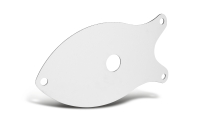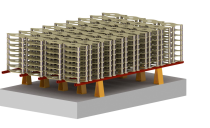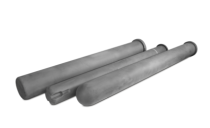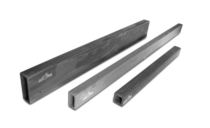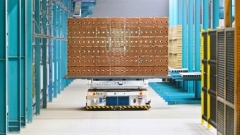
Silicon Carbide Kiln Furniture for Electric Kilns: Enhancing Efficiency and Sustainability
In today's rapidly evolving construction industry, the demand for energy-efficient and lightweight solutions in all process steps is more pressing than ever. As manufacturers strive to meet stringent environmental standards and reduce operational costs, Saint-Gobain Performance Ceramics & Refractories has responded with innovative Silicon Carbide (SiC) products designed to address these key trends. This article explores how Saint-Gobain's solutions for firing kiln furniture in the construction bricks and tile manufacturing sector contribute to sustainability, cost reduction and enhanced performance.
The Need for Energy Efficiency and Lightweight Solutions
The construction industry is under constant pressure to improve energy efficiency and reduce the weight of materials used in manufacturing processes to a minimum. This drive is fueled by the need to lower CO2 emissions, especially in Europe highly motivated by carbon emission taxes, comply with voluntary standards, and manage production costs effectively. Saint-Gobain PCR has developed a range of SiC products that not only meet these demands but also offer significant advantages in terms of durability and performance.
Key Trends in the Construction Sector
Several key trends are shaping the future of the construction industry, particularly in the context of kiln furniture for brick and tile manufacturing (Fig. 1):
1. Sustainability: Tile manufacturers aim to reduce energy consumption by 20% compared to 2010 baselines. Saint-Gobain's SiC products contribute to this goal by offering energy-efficient solutions that minimize environmental impact.
2. Production Costs: Reducing production costs is essential for maintaining competitive margins. SiC products from Saint-Gobain help lower operational expenses through improved energy efficiency and longer product lifespans.
3. Voluntary Standards: Compliance with standards such as LEED promotes environmental sustainability and ensures high product quality. Saint-Gobain's solutions are designed to meet these rigorous standards.
4. CO2 Emissions: Reducing CO2 emissions is crucial for minimizing environmental taxes and meeting regulatory requirements. SiC products help lower emissions by enhancing energy efficiency in kiln operations.
5. Alternative Energy: The ability to reduce dependence on gas resources and utilize alternative energy sources is increasingly important. Saint-Gobain's SiC products support this flexibility by enabling efficient electric firing of kiln furniture.
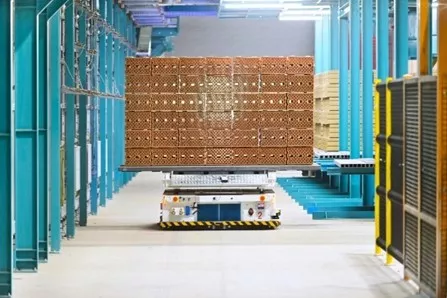
Furnace Activity and Energy Efficiency
Traditional furnace activities often involve gas firing, which is associated with energy-inefficient equipment. This inefficiency leads to higher energy consumption and increased CO2 emissions. Saint-Gobain's SiC products are designed to address these challenges by providing solutions that enhance energy efficiency and reduce reliance on gas-fired equipment.
Saint-Gobain's Solutions for Kiln Furniture
Saint-Gobain PCR offers a comprehensive range of SiC products tailored to the specific needs of the construction bricks and tile manufacturing industry. These products are designed to enhance performance, reduce energy consumption, and improve sustainability with innovative design while keeping structural integrity.
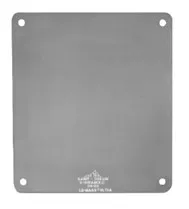
• Firing Support Plates – N-Durance® / Crystar®
These plates, with thicknesses down to 4mm, offer significant energy savings and are suitable for electric firing. They provide high loading capacity, mechanical resistance, and thermal shock resistance, making them ideal for automated production processes. These plates are lightweight and have high loading capacity and mechanical resistance. They also exhibit high temperature resistance and do not react or cause coloration with the tile product surface. Additionally, they are stackable with a flexible design, including suitable support/pin systems, and are suitable for automated production. (Fig. 2)
• Pusher Plates – REFRAX® 20 / AnnaSicon25
These high-abrasion resistance ceramic pusher plates increase service life and reduce downtime. They offer low dust generation, stable surface dimensions, and improved thermal management, ensuring long-lasting performance. These pusher plates are characterized by their long lifetime, low abrasion, low dust generation, and no product contamination. They maintain stable surface dimensions and provide improved thermal management due to the higher thermal conductivity of the SiC based material, making them an excellent choice for kiln furniture.
• Kiln Car Structure – Beams Silit® SK / N-Durance®
These beams are designed to reduce refractory weight, enhance energy efficiency, and facilitate easier product handling and stacking. They are adapted to advanced furnace designs and support automatic handling operations. These beams offer reduced energy consumption, increased loading capacity, long lifetime, and low abrasion. Additionally, they are lightweight, ensuring no product contamination and maintaining stable surface dimensions. They also offer improved thermal management and conductivity, making them well-suited for automatic handling and operations. (Fig. 3-5)

• Accessories
- Spacer – N-Durance®
In contrast to gas-fired kilns, electric kilns often face the challenge of distributing energy evenly. The spacers, placed between products, are essential for improving airflow throughout the kiln. This results in better circulation within the electric kiln, ensuring that there is sufficient spacing between products for uniform energy and heat distribution. (Fig. 6) Radiant Tubes – Silit® SKD
These tubes protect the heating elements within the kiln and offer numerous benefits. They enhance productivity while reducing energy consumption. With their extended service life and lower maintenance costs, they contribute to overall cost efficiency. Additionally, they optimize energy efficiency and provide excellent creep resistance up to a maximum application temperature of 1,380°C. These features make them an ideal choice for high-temperature environments.

Fig.6: SiC beams with spacer (wienerberger Österreich/Manfred Fesl)
Energy Savings and Environmental Impact
Saint-Gobain Performance Ceramics & Refractories' innovative products are engineered to deliver substantial energy savings and reduce environmental impact. The Saint-Gobain Energy Savings Calculator allows manufacturers to compare the energy performance of current kiln furniture with Saint-Gobain's Lo-Mass® kiln furniture offered including reduced weight design optimizations. This tool calculates potential savings in energy costs and CO2 emissions, providing a clear picture of the investment payback period.
Conclusion
As the construction industry continues to evolve, the need for energy-efficient, lightweight, and sustainable solutions becomes increasingly critical. Saint-Gobain Performance Ceramics & Refractories is at the forefront of this transformation, offering innovative SiC products that address the key trends of sustainability, production costs, voluntary standards, CO2 emissions, and flexible energy use. By adopting these advanced solutions, manufacturers can achieve significant improvements in performance, cost savings, and environmental impact.
Moreover, lighter products allow additional furnace capacity and is a significant factor in optimizing EHS conditions for operators in production plants.
For more information, contact us
N-Durance® Plate Setters
Ceramic components for kiln car and kiln rack constructions - enabling efficient firing of porcelain products and dinnerware products.
LO-MASS® Kiln Furniture
Discover Saint-Gobain Performance Ceramics & Refractories’ comprehensive range of solutions and materials for kilns and furnaces, including kiln furniture...
Ceramic Radiant Tube
Discover Saint-Gobain Performance Ceramics & Refractories’ extensive range of solutions for high temperature heat treatment applications.
Beams Kiln Car Construction
Discover Saint-Gobain Performance Ceramics & Refractories’ range of silicon carbide beams – ideal for use in LO-MASS® kiln furniture systems.
